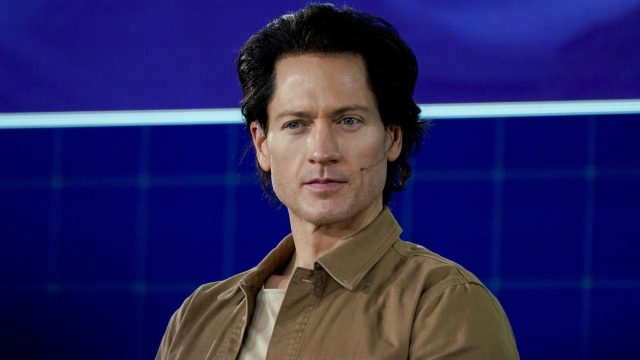
At a military parade in Beijing in September, Xi Jinping, 72, was overheard saying to Vladimir Putin, then also 72: “these days they say that at 70 one’s still a child”. Putin replied that, thanks to biotechnology, “human organs can be continuously transplanted, and people can live younger and younger, and even achieve immortality”. Xi responded that he’d heard there was a chance of living to 150 “this century”.
It was a reminder that many powerful people take the quest to slow or even reverse ageing very seriously – driven by a mix of real scientific momentum and techno-futurist hype.
Who wants to live for ever?
Stories about elixirs of life and fountains of youth are older than history. A plant with rejuvenating properties features in the Mesopotamian Epic of Gilgamesh, which was first written down in the second millennium BC. The first emperor of China is suspected to have died from drinking an elixir containing mercury in 210BC. In Christian Europe, it was thought that the philosopher’s stone would garner not only gold but immortality.
Since 1900, better sanitation, antibiotics and vaccines have more than doubled global life expectancy. The flipside is that we now mostly die of the diseases of old age: cancer, stroke, heart disease, dementia. Among some scientists and thinkers, this has led to a shift in mindset. Why research the various diseases caused by ageing, yet dedicate so little money to ending ageing itself? This is the argument of an influential 2005 allegory, “The Fable of the Dragon-Tyrant”, written by the Swedish philosopher Nick Bostrom. Why do we accept death, the dragon-tyrant, which demands a tribute of so many lives? Why not slay the dragon?
What sort of influence have such ideas had?
They have inspired tech moguls such as Amazon’s Jeff Bezos, Oracle’s Larry Ellison, Google’s Larry Page and OpenAI’s Sam Altman, who have brought start-up expertise – and billions of dollars in funding – to bear on the problem of death.
Many people with backgrounds in computer science see death as an engineering problem. Just as computer chips have doubled in power roughly every two years since 1965, so medicine, they think, might advance exponentially. And if you could extend your life by, say, 20 years, you could then use the new technologies discovered in that time to extend it by another 20, and so on – a state that futurists call “longevity escape velocity”, or LEV. A network of foundations and venture capital firms, mostly in California, is trying to make that happen.
What techniques do they use?
A few years ago there was a vogue for “young plasma” infusions. (Scientists had found that if you stitch an old and a young mouse together so that their circulatory systems are joined, the older mouse is rejuvenated.) Sadly, the US regulator found that young plasma gave no clear therapeutic benefits, and a real risk of toxic shock.
But now much “life extension” work is under way at organisations such as Google’s Calico, Altos Labs (part funded by Bezos), and the geneticist Craig Venter’s Human Longevity – looking at cellular regeneration, stem cell therapy, genetic editing, and metabolic therapies such as calorie restriction, among other ideas. The non-profit SENS Foundation is researching enzymes that remove waste in ageing cells. The Methuselah Foundation in Virginia has in the past funded a prize for the longest-lived mouse – a winner’s genetically modified mouse lived for almost five years, around 180 in human terms – and has sequenced the complete genome of the bowhead whale, the longest-lived mammal, which can reach beyond 200.
How are the results so far?
As well as their successes with mice, researchers have boosted the lifespan of roundworms (sixfold) and yeast (tenfold). However, these results have proved hard to replicate in humans, whose biological upper age limit is still around 125 years.
The problem is that both our bodies and the ageing process are very complex. A seminal paper in the journal Cell identified 12 hallmarks of ageing, such as DNA instability, chronic inflammation, cellular senescence (when cells stop dividing and secrete toxic sludge), mitochondrial dysfunction, and stem-cell exhaustion.
Aubrey de Grey, the Harrow-educated gerontologist who coined the phrase “longevity escape velocity” and co-founded the SENS Foundation, says the difficulty is that to stop ageing, every pathway to it “has to be delayed. If you delay changes in 90% of the pathways, you’re still going to die – and probably right on schedule.”
What other options are on the table?
Putin’s preferred method – organ transplants – is probably not a runner, as the surgery and immunosuppressant drugs needed are hard on ageing bodies. Many in Silicon Valley think the best bet is “whole brain emulation”: uploading the entire neural structure of your brain (and your consciousness) to a computer, leading to a transcendence of our biology sometimes known as the “nerd rapture”. This is entirely theoretical, for now. But Ray Kurzweil, Google’s “principal researcher and AI visionary”, has long predicted that it will be available by 2045.
How realistic is any of this? The field as a whole inevitably attracts hype, as well as cranks and quacks. But these foundations do fund serious research. By definition, though, it will take many years to bear fruit, unless AI can accelerate it vastly. As de Grey concedes, “If you want to reverse the damage of ageing right now I’m afraid the simple answer is, you can’t.”
This is not to say that what we do know – about the effects of sleep, diet, exercise etc. – can’t be carefully manipulated: witness the bizarrely youthful 81-year-old Larry Ellison, or another tech mogul, Bryan Johnson. But if you’re not a billionaire, then not smoking, taking exercise and following a low-meat Mediterranean diet is probably still the best advice.
Humanity has fantasised about finding the fountain of youth for millennia. How close are we now?





